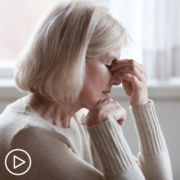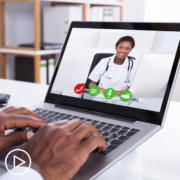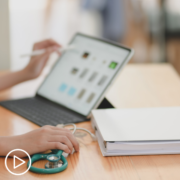CLL Clinical Trials Explained from Patient Empowerment Network on Vimeo.
What are the phases of clinical trials in chronic lymphocytic leukemia (CLL), and what happens during each phase? Expert Dr. Anthony Mato explains the phases, criteria for trial selection, and addresses patient fears.
Dr. Anthony Mato is Director of the CLL Program at Memorial Sloan Kettering Cancer Center. Learn more here.
See More From The Pro-Active CLL Patient Toolkit
Related Resources
Transcript:
Katherine:
For people who don’t understand how treatment approvals work, which would you give us an overview of the stages of clinical trials?
Dr. Mato:
Sure. I’m very involved in clinical trials at my center. There are different phases of clinical trials. And so, the way that I think about them would be – let’s focus on Phase I through III, because those are probably the most relevant ones for patients. The purpose of a Phase I trial is really to define the dose of the drug and confirm that it’s safe or not. We get very, very preliminary data about activity of the drug, but the major question that’s being asked is, “Is this drug safe?”
Phase II is – and I should also add that Phase I trials are relatively small. So, it’s a small number of patients where we’re trying to find the right dose. By the time we get to Phase II, we know the drug is likely safe. We have a lot of information about its side effect profile. We might have a hint that it’s active. And so, the purpose of a Phase II trial is to expand the size of the trial, have more patients recruited, get more information about safety but then get more information about activity.
Of course, there’s no comparator generally in a Phase II trial. So, it’s not like I’m asking this drug versus another drug. And the end of a Phase II trial, we know the drug is active, we know it’s safe. And if it appears to be active, we’re feeling confident that it may be better than a standard of care which leads to Phase III where the drug is compared directly in oftentimes what we call a randomized study to a standard of care.
So, the trial that I mentioned earlier, FCR versus FC would be a great example of a randomized, controlled trial where a new therapy would, in that case, the FCR, was compared to the old therapy, the FC.
In the more modern era, there have been several trials. I example I might mention is the RESONATE trial where ibrutinib was compared head-to-head to an antibody called ofatumumab. Patients who were enrolled were either randomized by a coin flip through a computer to one arm or the other. And then those arms are compared directly to help define a standard of care.
So, that’s kind of the basics of clinical trials, and at our center and many centers around the country, we participate in Phase I, II, and III trials trying to ask different questions that are important to our patients.
Katherine:
Well, speaking of patients, they’re very often fearful of participating in a clinical trial. What do you say to them to make them feel more comfortable with the idea?
Dr. Mato:
I mean, I think the most important thing to highlight is all of the standards of care that we’re using today, ibrutinib, acalabrutinib, idelalisib (Zydelig), duvelisib (Copiktra), venetoclax (Venclexta), these were all just drugs a few years ago that were studied in the context of clinical trials.
And so, our current standards of care are very new on the scene from clinical research. It’s very important to have a conversation with your doctor about the intent of a particular clinical trial. I think most patients are fearful of placebos or blinding where they don’t know what they’re getting, or it’s possible that they’re not getting any treatment at all.
In oncology and particularly CLL, the chances of a clinical trial having a placebo or blinding are very low. We very rarely ever participate in such studies. And so, that should provide reassurance to the patient that they know what they’re getting, they know they’re dose, their oncologist knows what they’re getting, and oftentimes, many clinical trials have mechanisms called crossover built into them. Meaning, that if you’re getting A versus B, and you get B, and it doesn’t work, you often have opportunity to cross over to A.
Clinical trials in CLL are the reason why there’s been so much innovation over the last several years, the reason why we can talk about six and seven approvals of drugs within half a decade.
And many of the drugs that we have at our centers will likely become standard of care in the near future. So, it gives us access to important drugs a little bit in advance of when they might be available for patients through FDA approval. So, it a lot of hope; it’s a lot of innovation. And the major message I would say to patients is don’t think of a clinical trial is for when all options have run out, but oftentimes there are great trial options that are aiming to improve the current standard of care in the frontline and also the relapsed/refractory settings.
Katherine:
What’s involved in patient participation in clinical trials?
Dr. Mato:
Well, the process is called informed consent, and so, if you’re interested in a clinical trial, you have a conversation with your oncologist to review the study, the schedule, the screening procedures. If you’re interested, you sign an informed consent and then begin a process of doing some testing, oftentimes scan, blood work, EKGs, bone marrow biopsy, to try to identify whether or not you’re a good candidate for the study.
Clinical trials are often more rigid than standard of care meaning you have to follow a strict schedule. You have to report everything, side effects, or successes related to the clinical trial. And oftentimes, a clinical trial is performed at the particular center that you signed the consent. And so, if you came to our center at MSK, odds are you would have to have treatment at our center in order to participate in that trial.
Once you’re enrolled on the trial, you’re on a strict schedule. You work with the physician and a research team, often a nurse directly who specializes in clinical trials to help ensure that you’re monitored appropriately and that the trial is successful for the patient.
















